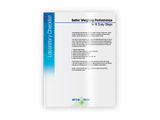To use all functions of this page, please activate cookies in your browser.
my.chemeurope.com
With an accout for my.chemeurope.com you can always see everything at a glance – and you can configure your own website and individual newsletter.
- My watch list
- My saved searches
- My saved topics
- My newsletter
Ettinghausen effectThe Ettinghausen Effect is a thermoelectric (or thermomagnetic) phenomenon that affects electric current in a conductor when a magnetic field is present. Additional recommended knowledgeThe result of the phenomenon is that a potential difference is induced normal to both the direction of the magnetic field and the current. Alternately, a temperature gradient is induced. This effect is quantified by the Ettinghausen coefficient |P|, which is defined to be where dT / dx is the temperature gradient that results from the y-component IY of an electric flux and the z-component BZ of a magnetic field. The reverse process is known as the Nernst effect. |
| This article is licensed under the GNU Free Documentation License. It uses material from the Wikipedia article "Ettinghausen_effect". A list of authors is available in Wikipedia. |








